5 Ways to Improve the Sound of Your TV
Let's face it—the sound produced by the speakers in virtually all TVs is dull and lifeless. TVs are so thin now, there's no room for decent speakers. But manufacturers think it's necessary to include them anyway, mostly to avoid complaint calls like, "I bought a new TV, turned it on, but there's no sound!" This is especially challenging for people who are hard of hearing and unable to comprehend dialogue in TV and movies.
Fortunately, there are ways to improve TV sound, ranging from simple and free to complex and expensive. Here are five ways to get the best sound possible from your TV.
1. Optimize TV and Cable/Satellite Box Audio Settings
Even though the speakers in most TVs sound terrible, you can often improve things a bit by adjusting audio or sound settings. Those settings usually include a simple equalizer with bass and treble controls. If you drop the bass or boost the treble a couple of steps, that will likely improve dialog intelligibility. It's generally better to drop the bass, which also relieves those tiny speakers from some bass duty they're not really capable of anyway.
Some TVs offer a more advanced equalizer with several frequencies that you can boost or cut. In that case, boost the frequencies around 1 to 3 kHz and cut the frequencies around 100 to 300 Hz by a couple of steps. If you're feeling adventurous, you can play around with these settings to find a combo that sounds best to you. Don't worry about doing any permanent damage; you can always return the controls to 0 and start over.
One more setting that can help is often called Night mode. Turning this mode on reduces the dynamic range between soft and loud sounds, so you can hear everything more clearly and evenly when the overall volume is relatively low.
Cable and satellite boxes often have audio controls that are similar to those mentioned here, so you can use them instead of the TV's. In fact, the cable/satellite box might offer such controls that the TV omits. But if the controls are available in both devices, don't adjust them in both to get the best TV sound settings, because it will double the effect.
2. Add a Soundbar
The most common way to significantly improve the sound of your TV is by adding a soundbar, which typically receives its signal from the TV's optical-audio output. Soundbars have their own, built-in amplifiers and range from simple 2-channel designs to models with a separate wireless subwoofer to packages with separate wireless surround speakers in addition to a subwoofer.
The most elaborate models even offer Dolby Atmos immersive audio with upfiring speakers that reflect sound from the ceiling. In some cases, the soundbar doesn't have separate surround or upfiring speakers, but it simulates a surround or immersive soundfield with psychoacoustic tricks and reflections from the walls and ceiling.
Soundbars are generally easy to place below the TV and set up, and there are no wires to be seen, even with a separate subwoofer and surround speakers. Keep in mind, however, that the subwoofer still needs to be plugged into an AC outlet along with the soundbar itself, and surround speakers normally connect to the subwoofer with wires, so the subwoofer must be placed near the surround speakers.
On the downside, most budget to mid-line soundbars have a reduced soundstage compared with true stereo speakers or a 5.1 home theater system. Also, soundbars without a subwoofer are not full range, and they tend to overemphasize the midrange. Even models with a subwoofer often have weak bass, and those subwoofers are generally not the best build quality. Finally, many soundbars can lack a wide dynamic range.
3. Expand the Soundstage with 2-Channel Stereo Speakers
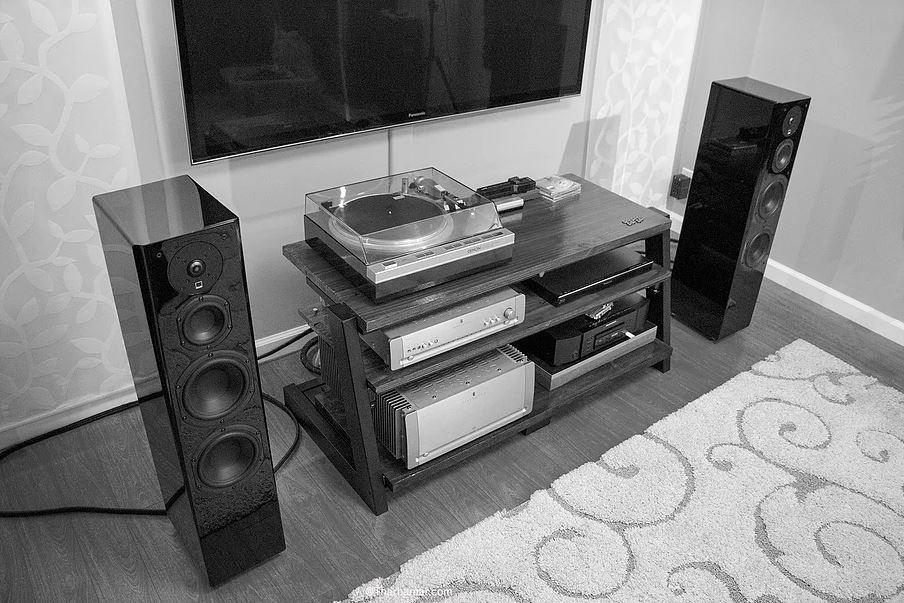
If you have room on either side of the TV, adding a pair of powered speakers, bookshelf speakers, or tower speakers can be a big improvement over a soundbar. Depending on the models you choose, such speakers can provide a much wider soundstage and better overall sound quality.
The best powered SVS speakers for a TV are a pair of Prime Wireless Speakers. These 2-way speakers have a frequency response from 52 Hz to 25 kHz (±3 dB), and they're powered by a total of 200 watts from dual class-D amplifiers. You can connect the TV to these speakers using an optical digital-audio cable, left/right RCA cables, or a 3.5mm stereo cable.
If you have a relatively new TV with wireless capabilities, you might prefer TV speakers with Bluetooth, and the Prime Wireless Speaker System is perfect for that situation. In addition, it can double as a killer stereo system for home with the ability to connect to your WiFi network, allowing you to stream high-resolution audio from Spotify, Pandora, Amazon Music, SiriusXM, and many other streaming services.
For a more traditional approach you can invest in a 2-channel integrated amplifier like the Prime Wireless SoundBase, and power a pair of passive bookshelf or floorstanding tower speakers. The benefit here is even more dynamic range and impact and deeper bass, all with the convenience of wireless streaming if you’re not using the TV.
Learn more about the Prime Wireless Powered Speaker System and Prime Wireless SoundBase.
4. Deeper, More Powerful Bass from a Subwoofer
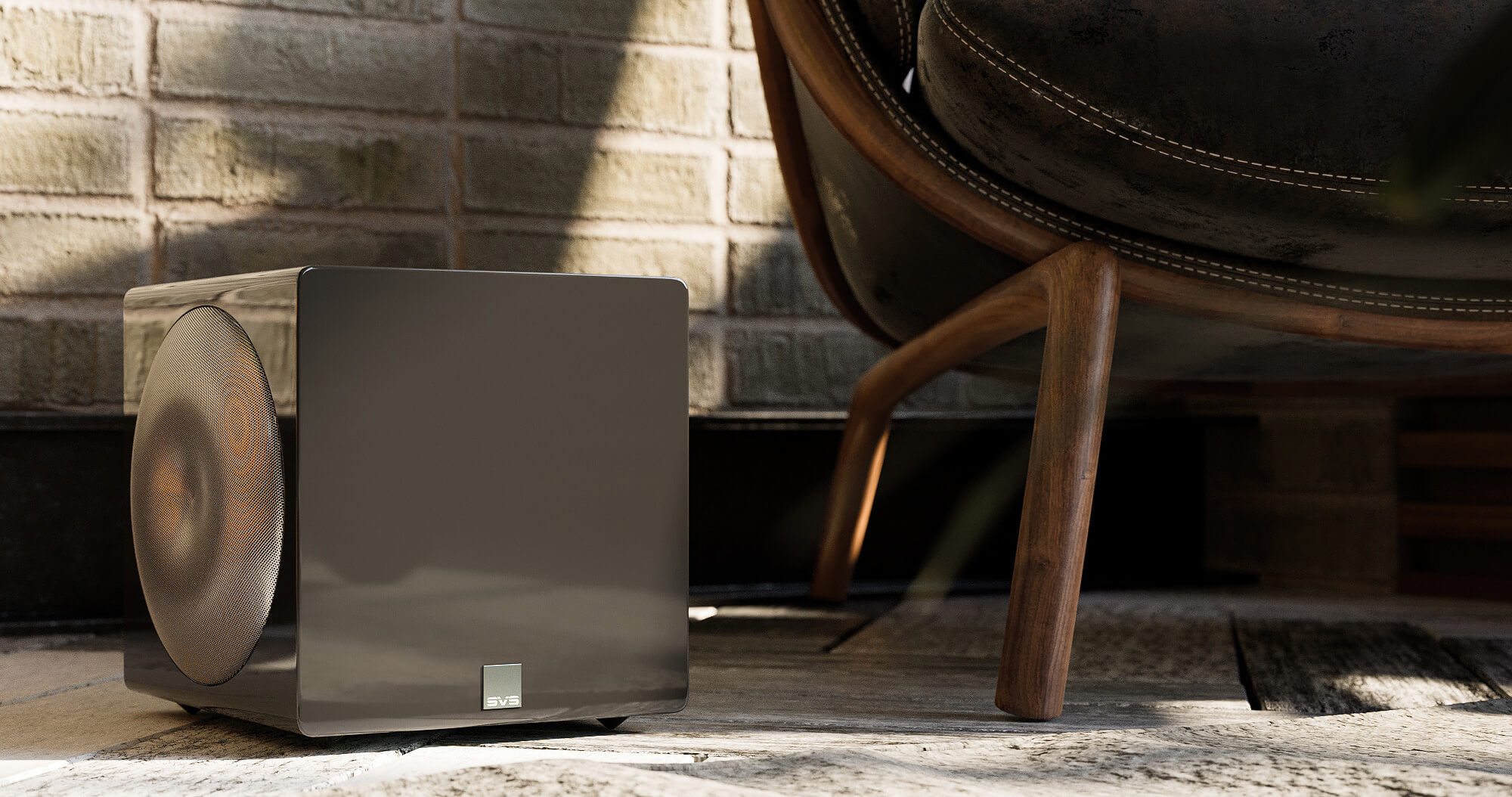
No compact, 2-channel stereo speakers or soundbar can reach down into the deep bass, which is critically important for most movie soundtracks and many musical genres. Adding a subwoofer to those speakers can take your TV sound to the next level, filling the room with sonic energy you can feel, like the roar of a rocket engine, a massive bass drop, or the boom of a huge explosion. A subwoofer makes TV sound a truly visceral experience.
Most powered stereo speakers provide a subwoofer output that sends the low frequencies in the incoming audio signal to a separate powered subwoofer. Among the many SVS subwoofers, we recommend the SB-1000 Pro or SB-2000 Pro for punchy and musical bass with ample depth and impact from a compact sealed cabinet. Both pair perfectly with the Prime Wireless Speaker System. These subwoofers extend down to the bottom of the human hearing range, adding that oh-so-satisfying gut punch to TV sound.
Of course, there are also much larger and more powerful ported subwoofers that can shake your entire home with their colossal output, but these are generally more suited for larger rooms and serious bassheads. To understand the difference, check out our article on Ported vs. Sealed subwoofers.
For a big sound difference that only requires a small amount of space, check out the 3000 Micro
5. Create an Immersive Home Theater Surround Sound Experience
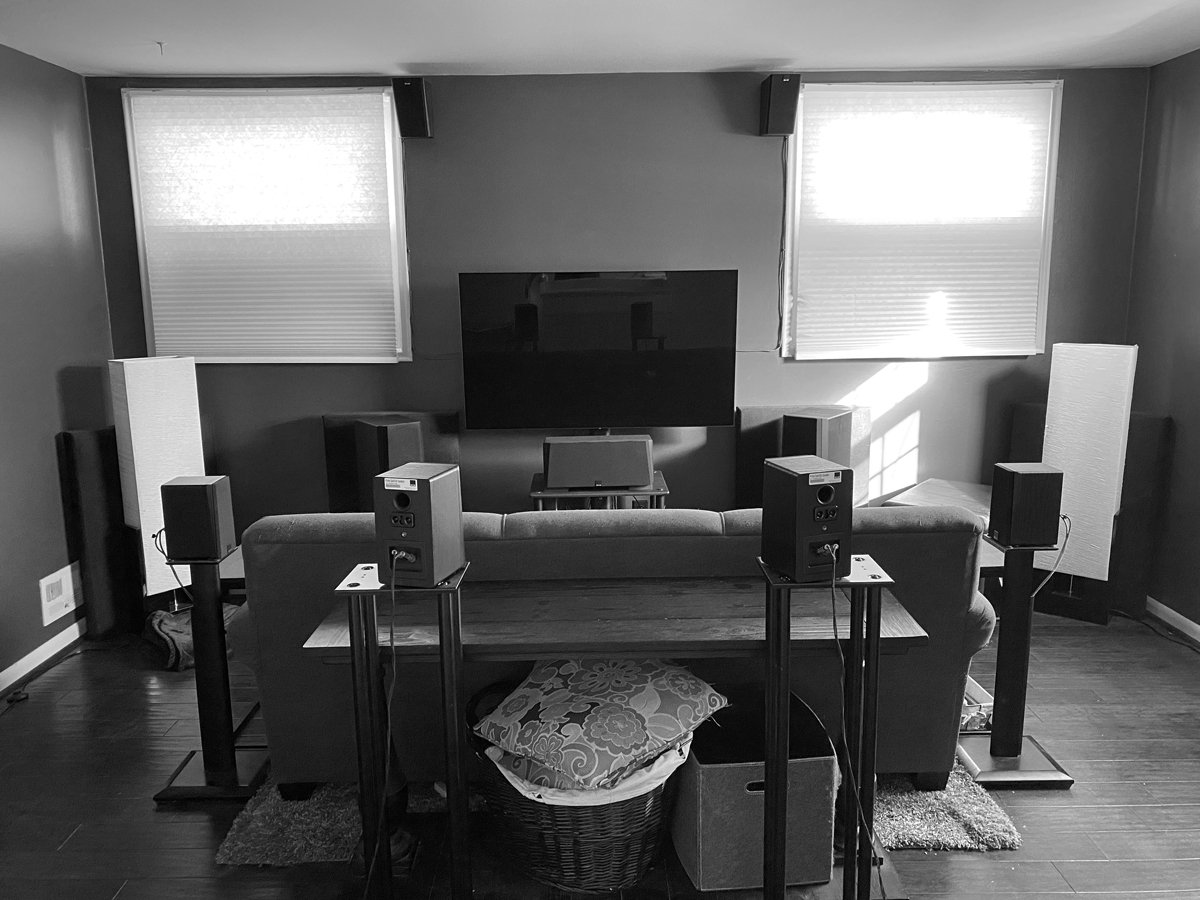
The best TV sound systems are those with multiple speakers around the listener. Surround sound systems include front left and right speakers on either side of the TV, a center-channel speaker directly below or above the TV, left and right surround speakers slightly behind the listening position, and a subwoofer; this is known as a 5.1 surround-sound system, because it has five main speakers and a subwoofer. If you add two more surround speakers behind the listening position, you have a 7.1 system. This type of setup also requires an AV receiver to power the speakers.
A true surround-sound system offers several advantages over a simple soundbar or even a 2-channel stereo speaker setup. For one thing, the center-channel speaker reproduces most of the dialog, anchoring it to the screen so it seems to be coming from the characters themselves. Granted, a soundbar does that as well, but the sound quality is rarely as good as a dedicated center-channel speaker, and the soundstage is not nearly as wide as it is with separate front left, center, and right speakers.
Also, separate surround speakers bring the action all around you with more convincing ambient noise and audio effects whiz by your head. For even more immersion, you can add two or more so-called height speakers for Dolby Atmos that reproduce sounds from overhead. These can be speakers mounted directly on the ceiling, high on a side wall or speakers that fire sound upward to reflect off the ceiling.
The two most common immersive-audio formats with overhead sounds are Dolby Atmos and DTS:X. A growing number of titles are being made with immersive soundtracks, which really put you in the middle of the movie with sounds all around you, such as rain and aircraft flying overhead as well as things happening to the sides and behind you.
What we're really talking about here is speakers for home theater. In this case, you also need an AV receiver or preamp/processor and multichannel amplifier to power all those speakers. This is the most complex and expensive option for improving the sound of your TV, but it's also the most rewarding, by far.
Of course, SVS offers many different speaker/subwoofer combos, which are sure to elevate your TV sound to new heights. You can explore them all right here on our website.
Not sure where to start? Reach out to the SVS Sound Experts who are standing by 7-days-a-week to help with choosing the best audio gear, setup questions and anything else. Just email, 877.626.5623 or chat.
Happy listening!
Audio System Setup Articles

Which Sounds Better, Vinyl or Digital Music?
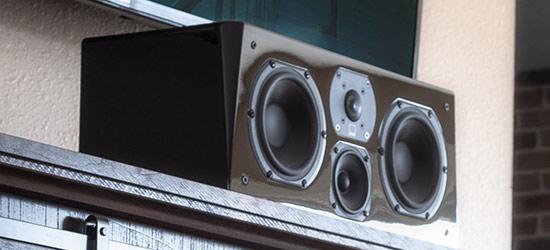
Why a Center Channel is the Most Important Speaker in Your Home Theater
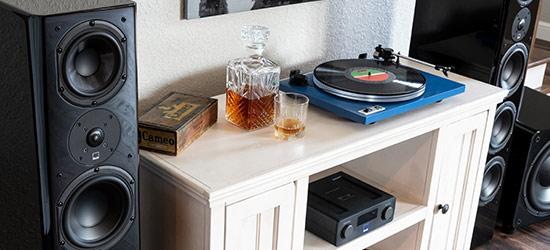
The Magic of 2-Channel Stereo Speaker Systems
Share Your Thoughts




